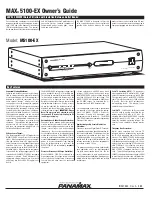
•
master-follower method
•
reverse reactance method
•
circulating current method
In order to realize the need for special measures to be taken when controlling
transformers in parallel, consider first two parallel transformers which are
supposed to be equal with similar tap changers. If they would each be in automatic
voltage control for single transformer that is, each of them regulating the voltage
on the LV busbar individually without any further measures taken, then the
following could happen. Assuming for instance that they start out on the same tap
position and that the LV busbar voltage U
B
is within
USet
±
D
U, then a gradual
increase or decrease in the load would at some stage make U
B
fall outside
USet
±
D
U and a raise or lower command would be initiated. However, the rate of change
of voltage would normally be slow, which would make one tap changer act before
the other. This is unavoidable and is due to small inequalities in measurement and
so on. The one tap changer that responds first on a low voltage condition with a
raise command will be prone to always do so, and vice versa. The situation could
thus develop such that, for example T1 responds first to a low busbar voltage with
a raise command and thereby restores the voltage. When the busbar voltage
thereafter at a later stage gets high, T2 could respond with a lower command and
thereby again restore the busbar voltage to be within the inner deadband. However,
this has now caused the load tap changer for the two transformers to be 2 tap
positions apart, which in turn causes an increasing circulating current. This course
of events will then repeat with T1 initiating raise commands and T2 initiating
lower commands in order to keep the busbar voltage within
USet
±
D
U, but at the
same time it will drive the two tap changers to their opposite end positions. High
circulating currents and loss of control would be the result of this runaway tap
situation.
Parallel control with the master-follower method
SEMOD159053-140 v5
In the master-follower method, one of the transformers is selected to be master, and
will regulate the voltage in accordance with the principles for Automatic voltage
control. Selection of the master is made by activating the binary input
FORCMAST in TR8ATCC function block for one of the transformers in the group.
The followers can act in two alternative ways depending on the setting of the
parameter
MFMode
. When this setting is
Follow Cmd
, raise and lower commands
(URAISE and ULOWER) generated by the master, will initiate the corresponding
command in all follower TR8ATCCs simultaneously, and consequently they will
blindly follow the master irrespective of their individual tap positions. Effectively
this means that if the tap positions of the followers were harmonized with the
master from the beginning, they would stay like that as long as all transformers in
the parallel group continue to participate in the parallel control. On the other hand
for example, one transformer is disconnected from the group and misses a one tap
step operation, and thereafter is reconnected to the group again, it will thereafter
participate in the regulation but with a one tap position offset.
1MRK 506 375-UEN A
Section 12
Control
Railway application RER670 2.2 IEC
297
Application manual
Содержание RELION RER670
Страница 1: ...RELION 670 SERIES Railway application RER670 Version 2 2 IEC Application manual ...
Страница 2: ......
Страница 22: ...16 ...
Страница 48: ...42 ...
Страница 70: ...64 ...
Страница 80: ...74 ...
Страница 100: ...94 ...
Страница 210: ...204 ...
Страница 364: ...358 ...
Страница 384: ...378 ...
Страница 468: ...462 ...
Страница 494: ...488 ...
Страница 504: ...498 ...
Страница 505: ...499 ...
















































